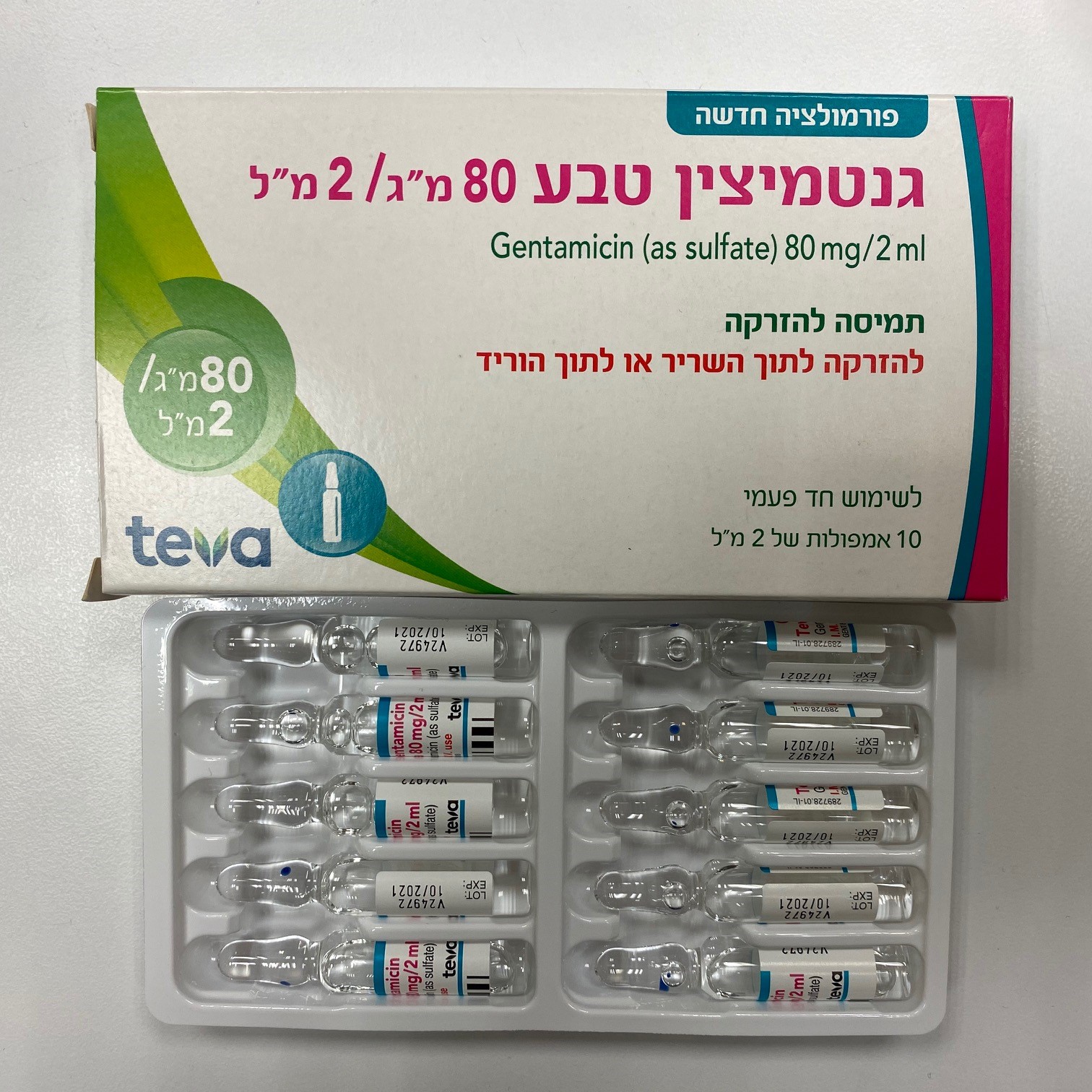Quest for the right Drug

גנטמיצין טבע 80 מ"ג / 2 מ"ל GENTAMICIN TEVA 80 MG/2 ML (GENTAMICIN AS SULFATE)
תרופה במרשם
תרופה בסל
נרקוטיקה
ציטוטוקסיקה
צורת מתן:
תוך-ורידי, תוך-שרירי : I.V, I.M
צורת מינון:
תמיסה להזרקה : SOLUTION FOR INJECTION
עלון לרופא
מינוניםPosology התוויות
Indications תופעות לוואי
Adverse reactions התוויות נגד
Contraindications אינטראקציות
Interactions מינון יתר
Overdose הריון/הנקה
Pregnancy & Lactation אוכלוסיות מיוחדות
Special populations תכונות פרמקולוגיות
Pharmacological properties מידע רוקחי
Pharmaceutical particulars אזהרת שימוש
Special Warning עלון לרופא
Physicians Leaflet
Special Warning : אזהרת שימוש
4.4 Special warnings and precautions for use Ototoxicity and nephrotoxicity Ototoxicity has been reported following the use of aminoglycosides, including gentamicin. Symptoms include loss of balance and hearing loss, which may be irreversible (see section 4.8). Important risk factors include renal impairment, high doses, prolonged duration of treatment and age (neonates/infants and possibly the elderly). Due to the potential for ototoxicity and nephrotoxicity, monitoring of vestibule, cochlea and renal function is recommended before, during and shortly after treatment (see section 4.8). Serum levels are determined so as to avoid peak concentrations above 10mg/l and troughs above 1 mg/l when administering gentamicin once daily and 2mg/l when administering gentamicin twice daily. As there is some evidence that risk of both ototoxicity and nephrotoxicity is related to the level of total exposure, duration of therapy should be the shortest possible compatible with clinical recovery. In some patients with impaired renal function there has been a transient rise in blood-urea-nitrogen, which has usually reverted to normal during or following cessation of therapy. It is important to adjust the frequency of dosage according to the degree of renal function. There have been observed cases of an increased risk of ototoxicity with aminoglycosides administered to patients with mitochondrial mutations, particularly the m.1555A>G mutation, including cases where the patient's aminoglycoside serum levels were within the recommended range. Some cases were associated with a maternal history of deafness and/or mitochondrial mutation. Mitochondrial mutations are rare, and the penetrance of this observed effect is unknown. In cases of significant obesity, gentamicin serum concentrations should be closely monitored and a reduction in dose should be considered. To avoid adverse events, continuous monitoring (before, during and after treatment) of hepatic and laboratory parameters is also recommended. Gentamicin should only be used in pregnancy if considered essential by the physician (see section 4.6). Gentamicin should be used with care in conditions characterised by muscular weakness. Superinfection Treatment with gentamicin may produce an excessive growth of drug-resistant micro- organisms. If this happens, an appropriate treatment should be initiated. Pseudomembranous colitis Diarrhoea and pseudomembranous colitis have been observed when gentamicin is combined with other antibiotics.These diagnoses should be considered in every patient that develops diarrhoea during or immediately after treatment. Gentamicin should be discontinued if the patient suffers severe diarrhoea and/or bloody diarrhoea during treatment and an appropriate treatment should be initiated. Drugs that inhibit peristalsis should not be administered (see section 4.8). Severe subcutaneous adverse reactions (SCARs) Serious skin reactions including Stevens-Johnson Syndrome (SJS) and toxic epidermal necrolysis (TEN) have been reported in association with gentamicin treatment. Patients should be informed about the signs and symptoms of serious skin manifestations and monitored closely. Treatment should be discontinued at the first appearance of skin rash, mucosal lesions or any other sign of skin hypersensitivity. Excipients This medicine contains 1.16 mg sodium, less than 1mmol (23 mg) per ampoule, i.e. it is essentially sodium free.
Effects on Driving
4.7 Effects on ability to drive and use machines Caution is advised when driving and using machines in view of the possible undesired effects such as dizziness and vertigo.

שימוש לפי פנקס קופ''ח כללית 1994
לא צוין
תאריך הכללה מקורי בסל
לא צוין
הגבלות
לא צוין
מידע נוסף
